ADDITION THEKT
A Publication of Ketel Thorstenson, LLP

Winter 2023
Important Things To Know About Use Tax
Homing in on Home Energy Credits
Paying Taxes the Electronic Way
What Do We Need to Prepare Your Personal Tax Return?
Page 1-2
Page 2-3 Page 4-5 Page 6 Page 7-8 Page 9
RAPID CITY, SD 810 Quincy Street 605-342-5630

SPEARFISH, SD
741 Main Street, Ste. 230 605-642-7676

GILLETTE, WY
305 S. Garner Lake Road, 307-685-4433
Bookmark
the KTLLP Blog Page


SECURE 2.0
In December, a government spending bill was signed into law with several significant retirement provisions. Here are some of the significant tax and retirementrelated provisions included in the SECURE 2.0 Act of 2022.
Expanded Automatic Enrollment in Retirement Plans
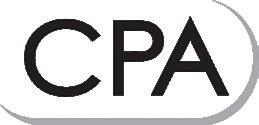
For retirement plans set up after the enactment date of SECURE 2.0, employers must provide for automatic contributions of at least 3% and not more than 10% during an employee’s first year of participation, unless the employee chooses otherwise.
Effective on the first day of each plan year after a completed year of participation, the contribution percentage must automatically increase by 1 percentage point to at least 10% but not more than 15%. This provision is effective for plan years beginning after December 31, 2024.
Increase in Age for Required Minimum Distributions (RMDs)
Higher Catch-up Limit
Starting in 2025, individuals reaching the age of 60 will be allowed $10,000 of catch-up retirement contributions. However, for individuals with income greater than $145,000 these added contributions will be subject to mandatory Roth treatment.
Penalty Free Withdrawals for Certain Emergency Expenses
www.ktllp.com
Retirement plans subject to RMDs just got a bump up in the age requirement. Under current law, the age to start RMDs is 72. That will change to age 73 for those that turn 72 after 12/31/2022 and to age 75 for those that turn 74 after 12/31/2032.
SECURE 2.0 provides an added exception to the 10% penalty tax for early distributions from retirement accounts. There is now an exception for certain distributions used for emergency expenses, such as unforeseeable or immediate financial needs relating to personal or family emergency expenses. These emergency expenses are capped at $1,000.
New Retirement Plan Designs
(Secure 2.0 continued on page 2)
Volume 29 Issue 1
Two new retirement plan designs were created by SECURE 2.0 and will become available in 2024. for
Updates here!
CONTENTS
Josh Newman, CPA, Manager, Tax Department
Josh Newman, CPA, Manager, Tax Dept.
SECURE 2.0
Workplace Wellness
First is a new type of section 401(k) plan called “starter 401(k) deferral-only arrangement” and second is a new type of 403(b) called a “safe harbor 403(b) plan.”
These plans are designed to reduce cost barriers for small businesses to offer employees retirement plans. Two of the significant benefits of these plans are no major year-end testing requirements and no employer contribution requirements.
Improving Coverage for Part-Time Workers
The first edition of SECURE required “long-term part-time employees” to be eligible for employer retirement plans. These individuals were defined as those working at least 500 hours per year for three consecutive years and meeting all other eligibility requirements of the retirement plan.
SECURE 2.0 has reduced that requirement from three consecutive years to two.
Reduction in Excise Tax for Not Taking RMDs
Under current law, the penalty tax for not taking enough RMD is 50% of the amount by which the calculated RMD exceeds the actual amount distributed during the calendar year. SECURE 2.0 reduces the 50% amount down to 25% and further reduces the 25% down to 10% if the failure to take the RMD is corrected in a timely manner.
Optional Treatment of Employer Contributions as Roth Contributions
In SECURE 2.0, employers can amend retirement plans and allow employees to designate employer contributions to their account as Roth contributions.
Important Things To Know About Use Tax
According to the South Dakota Department of Revenue, use tax is the counterpart of the South Dakota sales tax. The two taxes apply to the sales of the same products and services, have the same tax rates, and have similar laws. The difference is in how the taxes are applied. Use tax applies when state and applicable municipal city sales taxes have not been paid on
products and services (including those transferred electronically) that are used, stored, or consumed in South Dakota. Use tax is a common area that results in findings during a sales tax audit.

Common Instances in Which Use Tax Is Likely
Owed (1) Sales tax was not paid when buying the items and the products are not then resold.
(Important Things To Know About Use Tax continued on page 3)
Modification of Credit for Small Employer Pension Plan Start-up Costs
The Act changes the small employer pension plan start-up cost credit by:
• Providing credit equal to the entire amount of creditable costs (qualified start-up costs) of an employer with 50 or fewer employees (up to an annual cap)
• Allowing a credit amount for employer contributions to small employer pensions
• Fixing a technical glitch for small employers who join multi-employer plans
Tax-Free Rollovers from 529 Accounts to Roth IRAs
SECURE 2.0 allows the beneficiary of a 529 college savings account to make direct rollovers from a 529 account to a Roth IRA in their name without tax or penalty. The 529 account must have been open for 15 years, lifetime rollovers under the provision cannot exceed $35,000, and annual contribution limits are in play (income limitation is waived).
Winter 2023 - 2
ADDITION
KT A Publication of Ketel Thorstenson, LLP
THE
(Secure 2.0 continued from page 1)
Heather Grace, Associate, Accounting Services Department
Heather Grace, Associate, Accounting Services Dept.
ktllp.com
For example:
• Products removed from inventory for personal use.
• Samples bought by a business to display, or products/samples given to customers at no charge.
• A business donating items, such as prizes for a contest or fundraiser, owes use tax on the cost of the donated item.
• A business does not owe use tax on items donated to entities that are tax exempt.
• Spoilage.
(2) Sales tax paid to another state was less than what would have been paid in South Dakota.
• Credit is given for purchases with tax due and paid in another state. A receipt or invoice showing the amount of tax paid must be kept as documentation. Use tax is owed on the difference.
(3) New or used equipment brought into South Dakota is subject to sales or use tax on the purchase price. The business owes state and applicable municipal use tax if the vendor does not collect the sales tax.
(4) Items taken from inventory to be used for demonstration temporarily and then returned to inventory to be sold later are not subject to use tax.
(5) Online purchases may be subject to sales and use tax. Check the receipt information when buying items. If the sales tax is not listed, use tax is owed.
South Dakota Taxes & Rates
States Sales and Use Tax: 4.5%
Applies to all sales or purchases of taxable products and service
Municipal Sales and Use Tax: 1-2%
Applies to all sales of products and services that are subject to the state sales tax or use tax if the purchaser receives or uses the product or service in a municipality that imposes a state tax or use tax.
When is Use Tax Owed?
Use tax is owed on the full purchase price, including delivery charges or other fees, where the product is received or removed from inventory. Applicable municipal city sales and use tax rates are based on the location where the product or service is received. Use Tax is owed in the filing period in which the business buys the product or removes the item from inventory. There is a use tax liability, plus penalty and interest if use tax is not reported in a timely manner.
Businesses using services in South Dakota owe use tax on those services, even if the service provider completes their work outside of the state or is an out of state business. State and municipal city use tax is based on the location where the product or service is received.
Examples:
• A business in South Dakota hires an unlicensed Wyoming accountant to do their payroll. Everything is done through the mail or by phone, use tax is owed on the payroll services.
• An unlicensed attorney from
Minnesota provides legal advice to a client in South Dakota on a parcel of land bought in South Dakota. The attorney does not have a sales tax license. The client in South Dakota owes use tax plus applicable municipal city sales and use tax.
Businesses operating in multiple locations both in and outside South Dakota owe use tax on the portion of services allocated to their South Dakota location.
Example:
• A business with locations in North Dakota and South Dakota hires a Minnesota accountant to do their payroll in both states and all reports and billings are sent to the main headquarters in North Dakota. Use tax is owed on the percentage of the service allocated to the South Dakota employees. If 50% of the employees are based in South Dakota, then 50% of the service would be subject to use tax.
Businesses should review all purchases of goods or services to determine if the vendor charged the proper sales tax. Businesses with a South Dakota tax license report use tax on their sales tax return on line two.
The information in this article comes from the South Dakota Department of Revenue. More information can be found here.
Winter 2023 - 3 ADDITION
KT A Publication of Ketel Thorstenson, LLP ktllp.com
THE
If You Don’t See Tax Due on Your Purchase, You Likely Owe South Dakota Use Tax! SALES RECEIPT Paper $40.00 Pens $28.00 SUBTOTAL $68.00 SHIPPING $5.95 TAX $ --(Important Things To Know About Use Tax from page 2)
Homing in on Home Energy Credits
Alvarez, CPA, Director, Tax Department

Thinking about some home improvements? Maybe Uncle Sam can help you finance them with Energy Efficient Home Improvement credits.
Energy Efficient Home Improvement Credit
The Nonbusiness Energy Property credit was revived by the Inflation Reduction Act of 2022 and renamed the Energy Efficient Home Improvement credit. Congress extended the credit to tax year 2022 and inserted new provisions applying to tax years 2023 - 2032.
Tax Year 2022
How much is the credit for 2022?
The credit for eligible property placed in service in 2022 is the sum of the following two components:
• 10% of amount paid or incurred for Qualified Energy Efficiency Improvements installed during tax year
• Amount of Residential Energy Property Expenditures paid or incurred during taxable year
What property is credit eligible for 2022?
(1) Qualified Energy Efficiency Improvements (eligible for 10% of the cost of the property) relating to component installations on a principal residence:
• Any insulation material or system designed to reduce heat in a dwelling
• Exterior windows and skylights
• Exterior doors
• Metal or asphalt roofs designed to reduce heat
(2) Residential Energy Property Expenditures that qualify if installed on a principal residence:
• Electric heat pump water heaters meeting Department of Energy standards
• Electric heat pumps meeting specific efficiency standards
• Central air conditioners meeting specific efficiency standards
• Qualified natural gas, propane or oil water heaters
• Qualified natural gas, propane or oil furnace, or hot water boilers
• Advanced main air circulating fans used in a natural gas, propane, or oil furnace meeting Department of Energy test standards
What
is the Lifeline Limit for 2023?
The overall lifetime credit limit for 2022 is $500. However, the $500 lifetime credit limit ends in 2023 in favor of an annual credit limit of $1,200.
There is also a lifetime credit limit for 2022 of $200 specifically for exterior windows and skylights. In 2023, this $200 lifetime limit is replaced by an annual limit of $600.
How much is the credit for 2022?
Annual credit limits for items under the Residential Energy Property:
• Air circulation fans in natural gas, propane or oil furnaces - $50
• Natural gas, propane or oil furnaces, or hot water boilers - $150
• Electric heat pump water heaters, electric heat pumps, central air conditioners and natural gas, propane, or oil water heaters - $300
Tax Years 2023 through 2032 –The New Rules
The Inflation Reduction Act of 2022 made significant revisions. The changes, set to go into effect for property placed into service for tax year 2023, include:
• Credit percentage increase - 10% to 30%
• 30% credit applies to Residential Energy Property
• Residential Energy Property includes second homes
• New category of eligible costs - “Home Energy Audits”
Winter 2023 - 4 ADDITION THEKT A Publication of Ketel Thorstenson, LLP ktllp.com
Tom
Tom Alvarez, CPA, Director, Tax Dept.
(Homing in on Home Energy Credits continued on page 5)
(Homing in on Home Energy Credits from page 4)
• $500 lifetime limit replaced by $1,200 annual limit
• $200 lifetime limit for exterior windows and skylights replaced by $600 annual limit
• Qualified Energy Efficiency Improvements includes insulation air-sealing materials and systems
• Qualified Energy Efficiency Improvements excludes roofs
•
Residential Energy Property includes biomass stoves and air-sealing materials placed in service in 2023 or later
• Exterior windows and skylights
• Exterior doors
(2) Residential Energy Property can also be made to a second home and include:
• Electric or natural gas heat pump water heaters meeting highest efficiency tier established by the Consortium for Energy Efficiency (CEE)
• Certain electric heat pumps meeting highest efficiency tier established by the CEE
ADDITION THEKT
What classifies a “Home Energy Audit”?
Home Energy Audits are inspections and reports with respect to a dwelling in the United States owned or used as a principal residence that:
• Identify significant and costeffective energy efficiency improvements, including estimates of actual cost savings of each improvement
• Are conducted and prepared by a certified home energy auditor
•
Residential Energy Property includes improvements to panelboards, sub-panelboards, branch circuits, or feeders placed in service in 2023 or later
Questions for 2023
How much is the credit for 20232032?
The credit for 2023 - 2032 is now equal to 30% of the sum of:
• Amounts paid or incurred for Qualified Energy Efficiency Improvements installed during year
• Amount of Residential Energy Property for year
• Amounts paid during year for “Home Energy Audits”
What is eligible for 2023?
(1) Qualified Energy Efficiency Improvements made to a principal residence for 2023 are the same as 2022, except that roofing no longer qualifies. The following items qualify:
• Insulation materials or systems, including air-sealing materials or systems, specifically and primarily designed to reduce heat loss in a dwelling
• Certain central air conditioners meeting highest efficiency tier established by the CEE
• Natural gas, propane or oil furnaces, or hot water heaters meeting highest efficiency tier established by the CEE
• Natural gas, propane or oil furnaces, or hot water boilers meeting highest efficiency tier established by the CEE
• Biomass stoves or boilers used to heat a residence, with a thermal efficiency rating of at least 75%
• Oil furnaces and hot water boilers placed in service 2023 - 2026 which meet or exceed 2021 Energy Star efficiency criteria and use eligible fuel blends, or those placed in service after 2026 that achieve annual fuel use efficiency rate of 90 and are rated for use with eligible fuel blends
• Improvements or replacement of panelboards, sub-panelboards, branch circuits, or feeders installed according to National Electric Code, have a load capacity of not less than 200 amps, and are installed along with other properties for which a credit is allowed under section 25C
What about annual credit limits for specific items for 2023?
For 2023, the credit generated by the following items cannot exceed:
• Energy audits - $150
• Exterior door - $250
• All exterior doors - $500
• Exterior windows and skylights; central air conditioners; electric panels and related equipment; natural gas, propane or oil furnaces, or hot water boilers$600 annual aggregate total
• Electric or natural gas heat pump water heaters; electric or natural gas heat pumps; certain biomass stoves and boilers - $2,000
» For this category, the $1,200 total credit annual limit and the $600 limit on energy property may be exceeded
To better understand these tax changes and how they may apply to your planned home improvements, please contact your KTLLP Tax Advisor.
Winter 2023 - 5
Publication of Ketel Thorstenson, LLP
A
ktllp.com
Paying Taxes The Electronic Way
Jennifer Konvalin, CPA, Partner, Tax Department

When it is time to make a tax payment, who would you trust more to get the payment to your account: the United States Postal Services (USPS) or the Internal Revenue Service (IRS)? If you’re like me, my response would be is there a third option?
In the past two years, we have seen various issues with the USPS not delivering items properly or on time. The IRS has not been any better, as they are more behind than ever with truckloads of mail that remain unopened since the pandemic began. Due to all these issues, we are fielding more questions, unnecessary IRS notices, and frustrations all around. The good news is that there are three electronic options to make tax payments that are secure and easy to complete.
The first option, which I personally use and recommend to clients, is the Direct Pay option with the IRS. Go to IRS.gov, find the “Make a Payment” button, and select “Pay Now with Direct Pay” on the next screen. This no-fee option will easily guide you through identifying your information and entering your bank information to have the IRS directly debit your account for
payment. You can schedule the date you want the payment to be made, and pre-schedule payments for up to one year ahead of time. You also have until 11:45 pm ET to schedule a same day payment. You can change or cancel any of these payments up to two business days prior to the scheduled payment date. You can also choose to pay by credit card or digital wallet, but there is a processing fee for selecting these options.
The second option is setting up a direct debit when we file your tax return. We can set this up for your tax payment due, and any estimated tax payments, by entering your bank information before sending your return to the IRS. The payments will then be automatically scheduled to come out of an account of your choosing on their respective due dates. All you need to do is make sure there are sufficient funds in your account to cover the scheduled payments. There will be a penalty charged if funds are insufficient. There is a
way to cancel these payments after signing up for them if needed, due to changing circumstances, bank accounts, or any other reason.At that point, you will need to make your payments another way.
The third and final option is to set up an account with the IRS. This method allows you to see the history of your account, make payments, get transcripts and several other options. Setting up an account with the IRS can also be found on IRS.gov. However, it is a tedious process to set up an account and authenticate your identity, but that should only be a one-time issue.
On a related note, we have received information that when scheduling payments for a Married Filing Jointly tax return, you should still use the “primary taxpayer's” information when entering identity information and scheduling payments. If you use the “spouse” information, there is a chance the IRS will not match up payments with your filed return. We will then have to tell them where to move the payments they have unallocated to the filed return. This simple practice will help avoid headaches in the future.
For more information or help on this or any of your tax needs, don’t hesitate to contact your KTLLP Tax Advisor.
Winter 2023 - 6 ADDITION THEKT A Publication of Ketel Thorstenson, LLP ktllp.com
Jennifer Konvalin, CPA, Partner, Tax Dept.
What Do We Need to Prepare Your Personal Tax Return?
Richters, EA, Manager, Tax Department
The new year has begun, it is time to start gathering documents and information for your tax advisor. This can be an overwhelming and timeconsuming task. One choice is that we can send you an organizer that will summarize data you have sent in the past.
1 - INCOME
• W-2 – Wage & Income Statement
• 1099-NEC – Non-Employee Compensation
• 1099-Miscellaneous –Usually Rental Income
• 1099-R – Retirement Statement
• SSA-1099 – Social Security & Medicare Statement
• K-1 for Partnerships, S-Corporations, or Trusts
• 1099-INT – Interest Income
• 1099-DIV (Dividend Income) and 1099-B (Capital Gains Income) which may come as a combined package from your brokerage
• Any other income earned from a business, rental, royalties, or farm/ranch
• Less common items:
» 1099-G for unemployment or state tax refunds
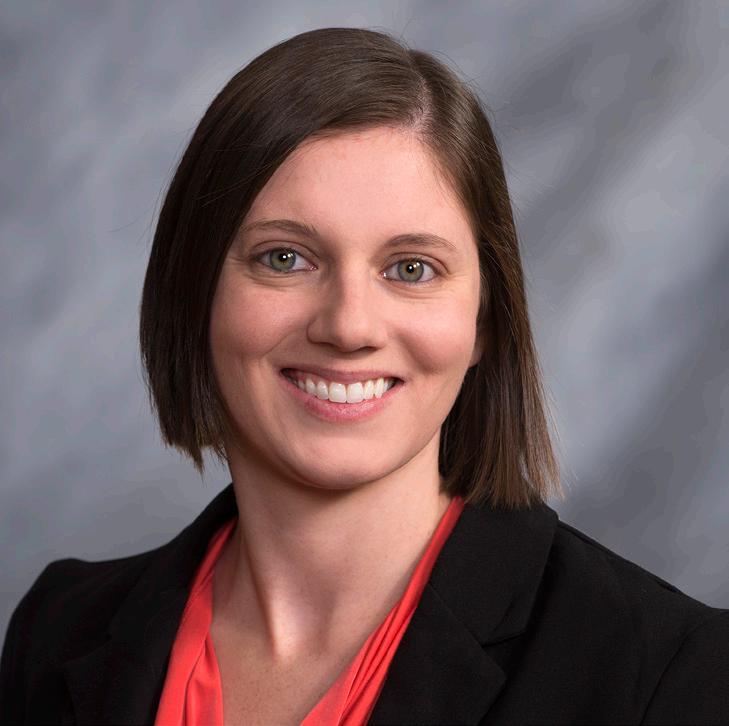
» W-2G for gambling winnings
» Amount of alimony received
Most income is considered taxable. It is better to send the information to your tax advisor so they can figure out taxability.
2 - EXPENSES
• Business expenses incurred that are ordinary and necessary
• Large business purchases that may need to be depreciated
• A W-3 showing wages paid to employees (unless we prepare this for you)
This will primarily relate to taxpayers with businesses, rentals, farms and ranches, as most other income sources will not have any tax-deductible expenses to offset the income.
Acommon question is whether you need to provide receipts to us. For day-to-day expenses, no receipts are needed for tax preparation. However, we highly recommend you keep records of those expenses. For large purchases that are out of the ordinary, please provide a receipt or invoice to your tax advisor.
If you are using software such as QuickBooks Desktop or QuickBooks online, remember to send us a copy of the file, software version, and login information.
(What Do We Need to Prepare Your Personal Tax Return? continued on page 8)
Winter 2023 - 7 ADDITION THEKT A Publication of Ketel Thorstenson, LLP ktllp.com
Kim
Kim Richters, EA, Manager, Tax Dept.
To help manage the process, here are the items needed to prepare a
personal tax return.
3 - TAX DEDUCTIONS
If you have more itemized deductions than the standard deduction - $25,900 married filing jointly for 2022, please provide the following:
• Medical and dental expenses paid out of pocket, if it looks like they will be higher than 7.5% of your income
• Real estate taxes
• Sales tax on major purchases such as vehicles, boats, or home remodels
• 1098 showing mortgage interest paid and mortgage insurance premiums, if any
• Cash donations to qualified 501(c) (3) organizations – if a single donation is over $250, provide a receipt from the organization
Other tax deductions are available without itemizing:
• 1098-E for student loan interest paid
4 - TAX CREDITS
• Eligible educators can deduct up to $300 worth of qualified expenses paid out of pocket
There are tax credits available that will dollar-for-dollar reduce your tax bill. It is imperative you provide information to determine if you qualify for these credits.
• Childcare expenses – provider’s name, EIN or SSN, address, and total amount paid
• 1098-T for tuition paid to higher education institutions for you or a dependent
• Residential energy credits
• Adoption credit
6 - OTHER
• Personal and dependent information including social security numbers, dates of birth, and current address
• Contact information such as phone numbers and emails
• Bank routing and account information for refund deposits and direct withdrawal of estimated payments and balance due
• Details about any foreign bank accounts or assets, if any Federal and state estimated tax payments made
• Federal and state estimated tax payments made
• Non-cash donations – if all donations total over $500, provide a receipt from the organization of the items donated and the fair-market-value of the items
• Gambling losses (only if you have gambling income)
• Alimony paid is still tax deductible in certain circumstances
5 - MISC. FORMS
• 1095-A for marketplace insurance and premium tax credit
• 5498-SA for health savings account (HSA) contributions
• 1099-SA for distributions from HSA accounts
The most efficient and secure way to send this information to us is electronically via our Client Portal found at ktllp.com. Simply click “Client Portal” on the home page then “Login to Client Portal.” On the next page, choose the recipient (your tax advisor) from a drop-down menu, drag the files onto the screen, and choose “Upload”. The recipient will receive a notification of the available documents.
Other ways to send us your information include emailing documents (keep in mind this is less secure), mailing them to our office, or dropping them off at our front desk or the drop box outside our building.
A question we often hear is, “When do you need my information?” The answer is there are multiple factors to consider. We understand that certain tax documents are simply available later in the year. However, the sooner you supply what information you do have, the more time your tax advisor will have to analyze it and determine the outcome of your return.
This is not meant to be a comprehensive list. Be certain to have a conversation with your tax advisor at Ketel Thorstenson to find out if there are more details that need to be included on your tax return.
Winter 2023 - 8
A Publication of Ketel Thorstenson, LLP
What Do We Need to Prepare Your Personal
ktllp.com ADDITION THEKT
(
Tax Return? from page 7)
Workplace Wellness
Steph McCoy, SHRM, Manager, Human Resource Department
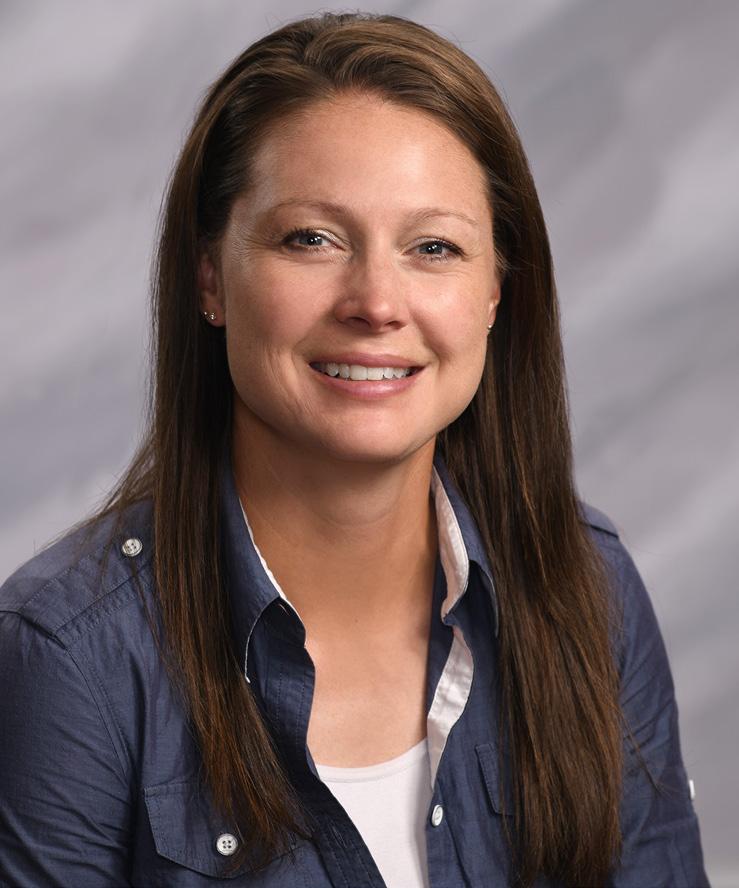
In July 2022, I joined the Ketel Thorstenson team. When our CEO asked me to focus on workplace wellness, I knew I had landed in the right place. Not because I wanted a discounted gym membership or to make employees eat more broccoli, but because our CEO recognized the importance of investing in employees.
Workplace wellness is a huge concept; it’s an action, a noun, a feeling. How as an employer do you take what has become an essential
focus in today’s business world and do it right? Regardless of the size of employer you are, I would argue wellness is not about benefit additions. Wellness at work is about how your employees feel about work (yes, feelings), perceive their value, and experience purpose in what they do. While I champion any employer who can supply monetary wellness benefits, I encourage you first to focus on what only requires your intentional focus.
Intentional focus on a healthy workplace will yield retention and recruitment of the right fit for your business. Here are seven recommendations to improve the wellness of your workforce as you roll into 2023. None are breakthrough discoveries, but they are tried-and-true efforts that will make a difference.
1. Ask employees what motivates them to work for you and capitalize on this. I am confident this is not money. If they like their coworkers, focus on diversity, equity and inclusion. If they like those they serve and support, increase their opportunities. If they like learning, train them!
2. Ask your employees what makes their job difficult. Fix what you can, and address what you cannot.
3. Seek out people who make work difficult or unpleasant for other people and speak to them. One great performer making work miserable for everyone else is not worth retention.
4. Communicate and support avenues for employees to share where they may need help. If mental health or outside of work influences are causing stress, have an open discussion, suggest resources, follow up and support.
5. Walk the talk. Whatever you say you support at the top of your organization, embody it yourself. If you want to reduce sugar intake for your employees, stop buying donuts for meetings and supply healthy options in the breakroom.
6. Over communication. Anxiety is the simple concept of looking ahead at things unknown and not feeling in control; making you envision stress and worse case in your mind. Tell employees everything you can as soon as you can.
7. Check in. Put an intentional reminder in your calendar to make sure you touch base with everyone you supervise on a routine basis. Ask them how they are doing, what they need, and express appreciation.
Employees who show up to work, want to be a part of your organization and keep your doors open are invaluable. Invest in the benefit of their wellness by providing your time, listening, and following up with support. You cannot control an employee’s wellness, you cannot make them eat right or work out, but you can affect how they experience 40 hours of their week.
Winter 2023 - 9 ktllp.com ADDITION THEKT A Publication of Ketel Thorstenson, LLP
Steph McCoy, SHRM, Manager, Human Resource Dept.
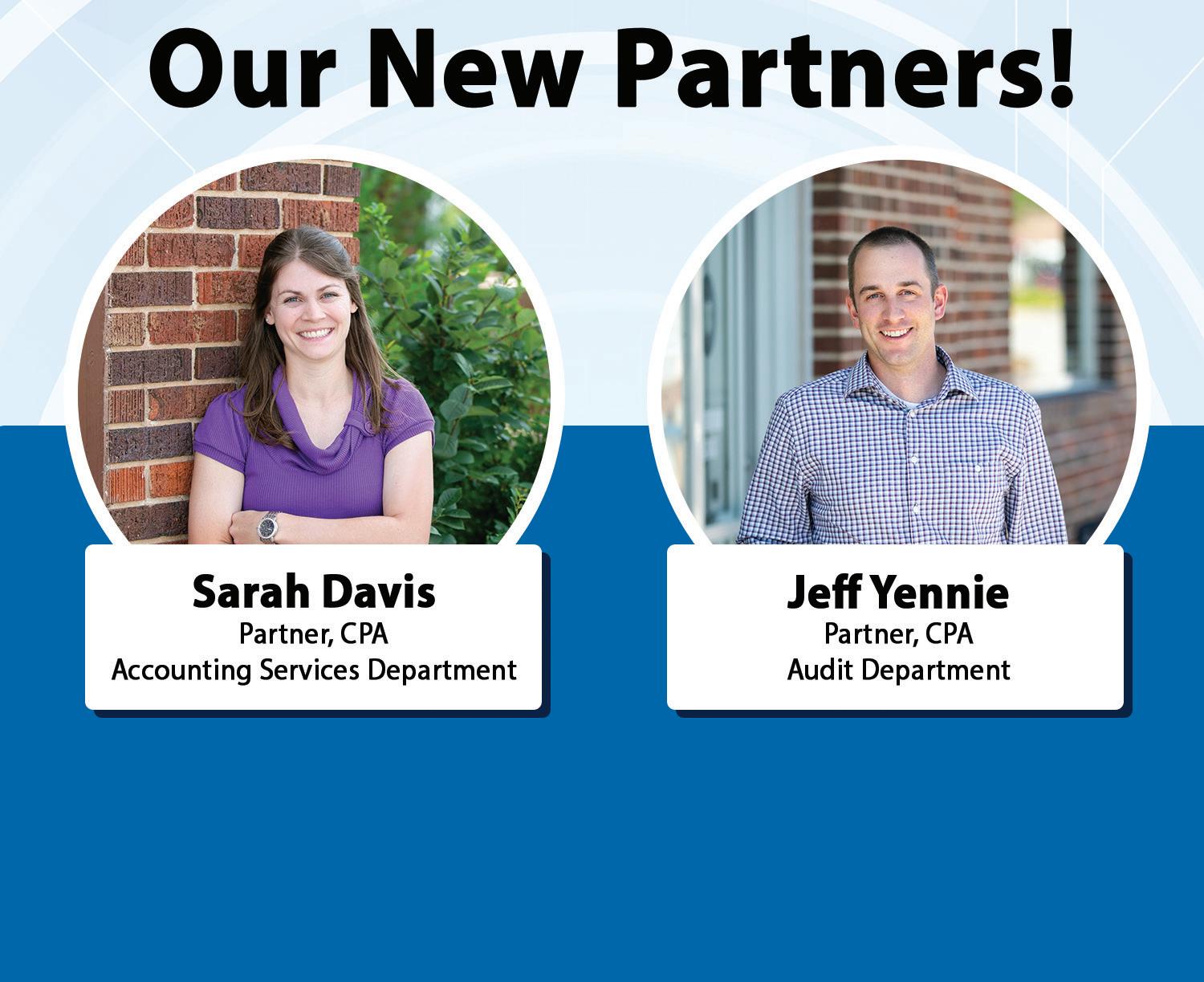


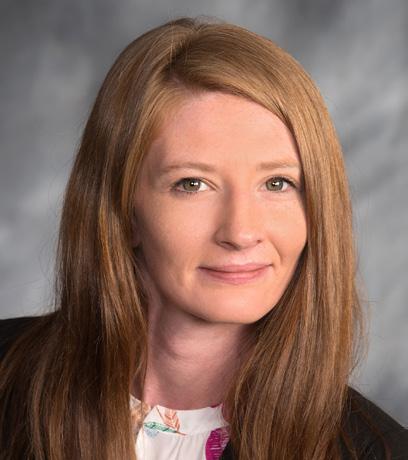

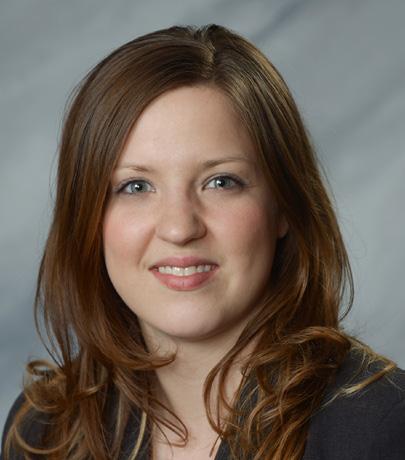

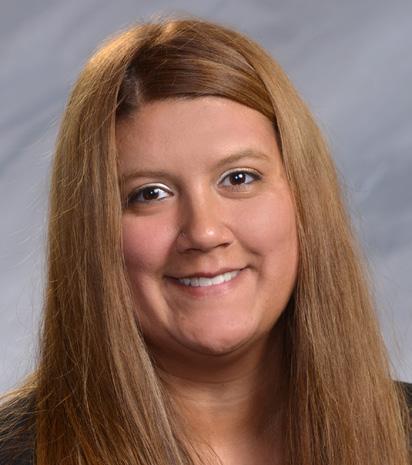



Tax
Kim Richters, EA Manager,
Department
Tax
Winter 2023 - 10 ktllp.com ADDITION THEKT A Publication of Ketel Thorstenson, LLP KT News — New Partners, Promotions & Hires!
Audrey Moore, EA Senior Associate,
Department
Senior Associate, Accounting Services Department
Jessica Harwood
Tax Administrative Coordinator, Tax Department
Miranda McGuire
Accounting Services
Amanda Dennis
Manager,
Department
Senior Associate, Accounting Services Department
Catherine Shoun
Administrative
Tax
Megan Eull
Assistant,
Department
Audit
Lizzy Johnson Associate,
Department
Tax
Mario Hernandez
Associate,
Department
Haga Senior Associate, Tax Department NEW HIRES WELCOME TO THE TEAM! • Specializes in hospitality and construction industries • Team Leader in Employee Tax Retention and related payroll filing • Focuses on audit and advisory practices • Specializes in government, nonprofit, construction, manufacturing and retailers Promotions Teamwork! STRATEGY TAKES ktllp.com
Virginia
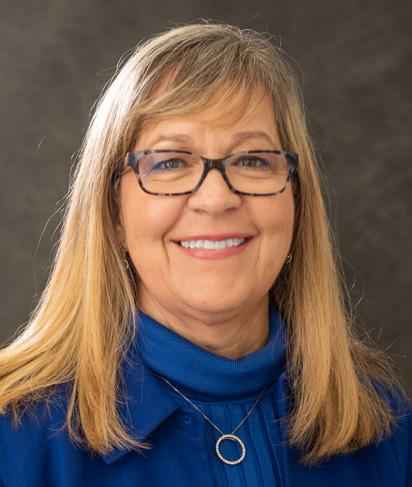


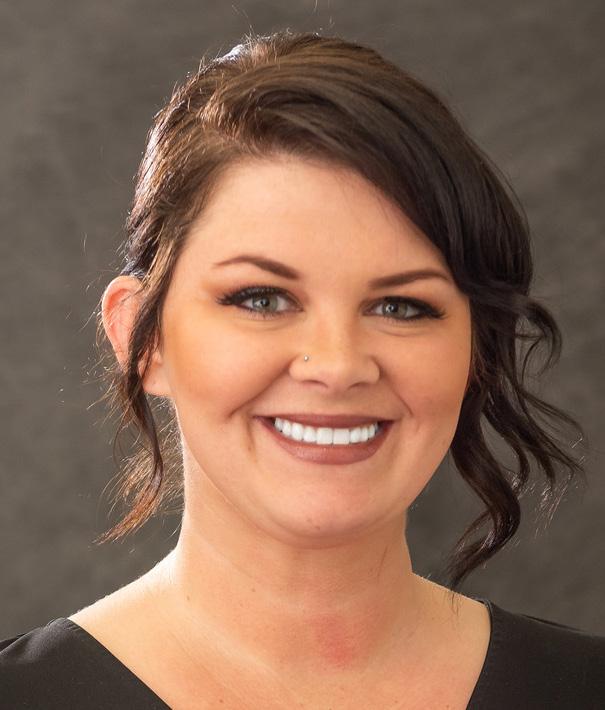

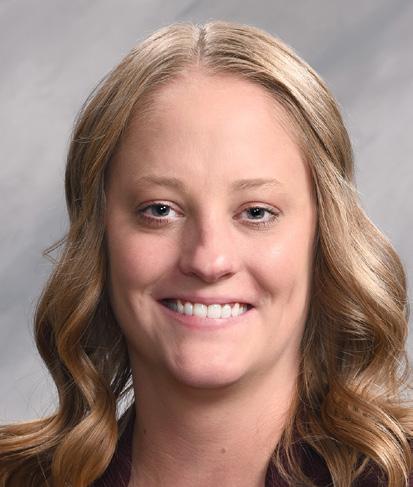


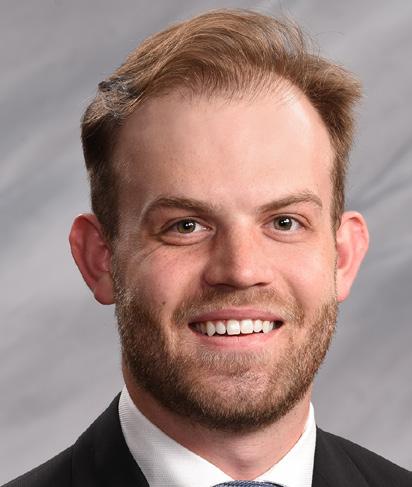
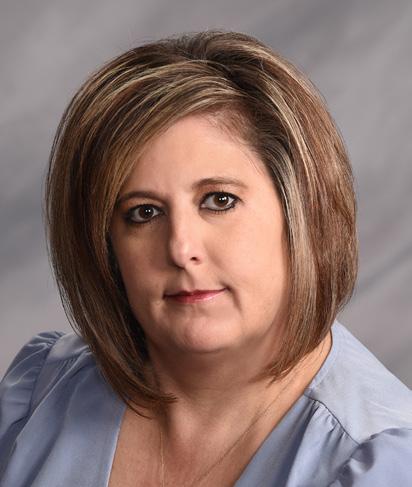



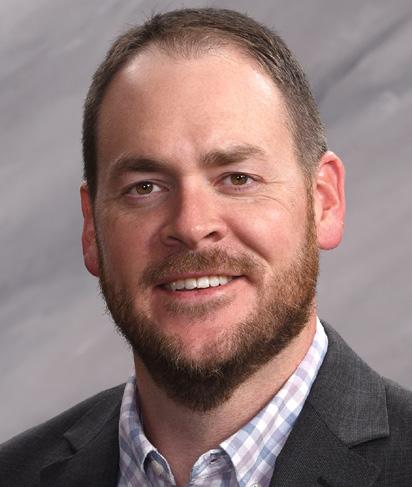

NEW HIRES Winter 2023 - 11 ktllp.com ADDITION THEKT A Publication of Ketel Thorstenson, LLP
Holli Lawrence Senior Associate, Tax Department
Dawn Taggart Associate, Accounting Services Department
Megan Rehms Associate, Audit Department
Mallory Eck Associate, Tax Department
Sadie Snyder Manager, Marketing Department
Megan Salisbury Administrative Assistant, Accounting Services Department
Erik Finke Associate, Tax Department
Tom Alvarez, CPA Director, Tax Department
Tanner Broschat Associate, Tax Department
Wendy Perkins Administrative Assistant, Audit Department
Bridgett Foss Administrative Assistant, Tax Department
Colin Highland
Associate, Audit Dept. BHSU
KT News — New Hires, Graduates & Interns! Enrica Shaffer, Accounting Services Dept. Tyler Policky, Audit Dept. Taylor McSherry, Tax Dept. Alex Arango Gomez, Audit Dept. Sydney Theobald, Tax Dept. Brady Gillette, Tax Dept.
Megan
Rehms
Associate, Audit Dept. BHSU
Chris Seljeskog
Marketing/HR Coordinator, Marketing Department
CONGRATS, GRADUATE! CONGRATS, GRADUATE! WELCOME TO THE TEAM!
Cody Hoflund Associate,
Accounting Services Department INTERNS
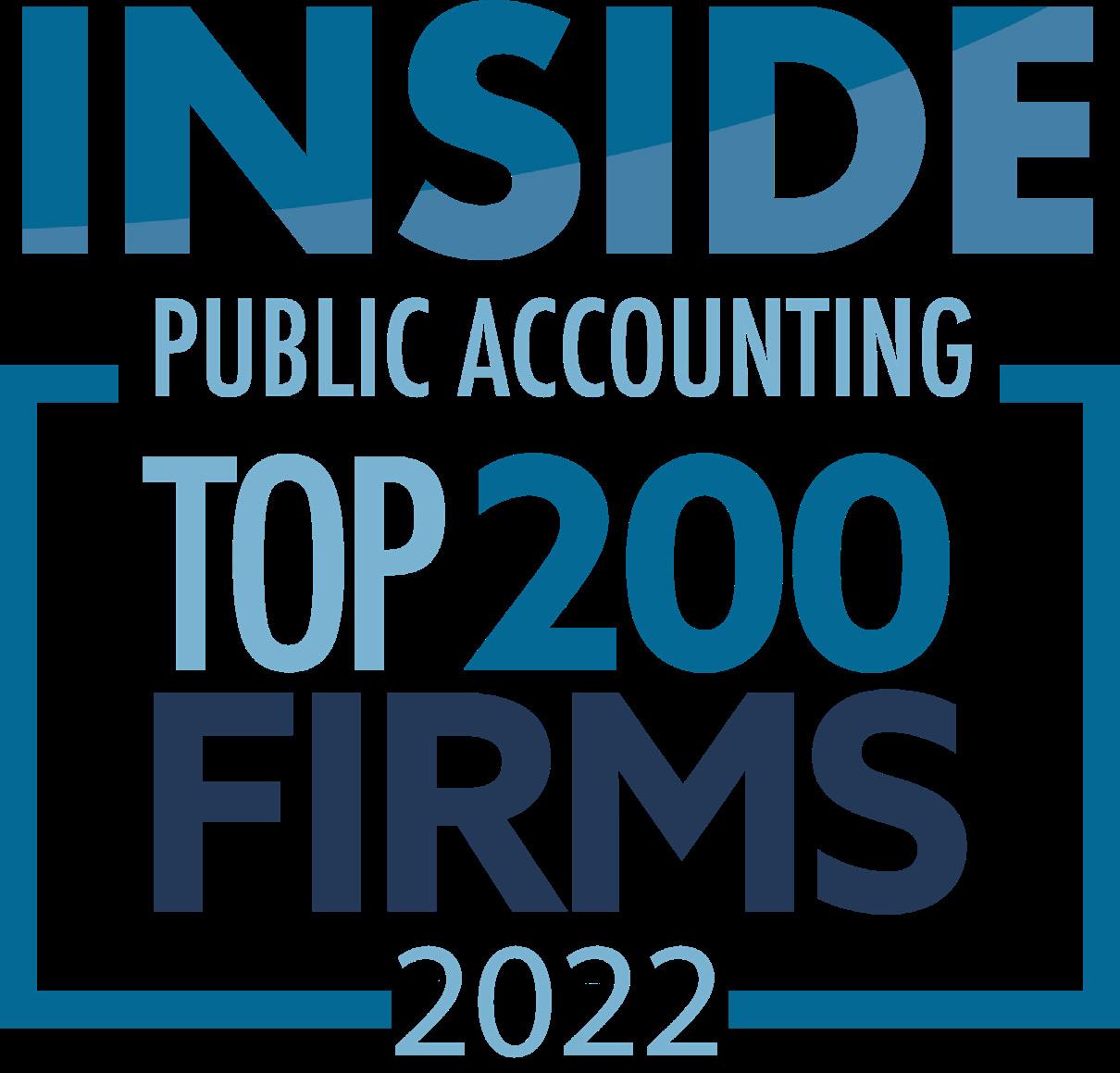



Winter 2023 - 12 ktllp.com ADDITION THEKT A Publication of Ketel Thorstenson, LLP
Thank you for your business! We are honored that you have trusted Ketel Thorstenson, LLP with your accounting, tax, and financial needs. Your confidence is truly appreciated! Join the conversation online
The KT Addition is a publication of Ketel Thorstenson, LLP. It is published for clients, advisors and friends of the firm. The technical information included is necessarily brief. No final conclusions on these topics should be drawn without further review and consultation with a professional. Direct any inquiries, address changes or problems with your newsletter to the editor in Rapid City. Editor: chris.seljeskog@ktllp.com









































